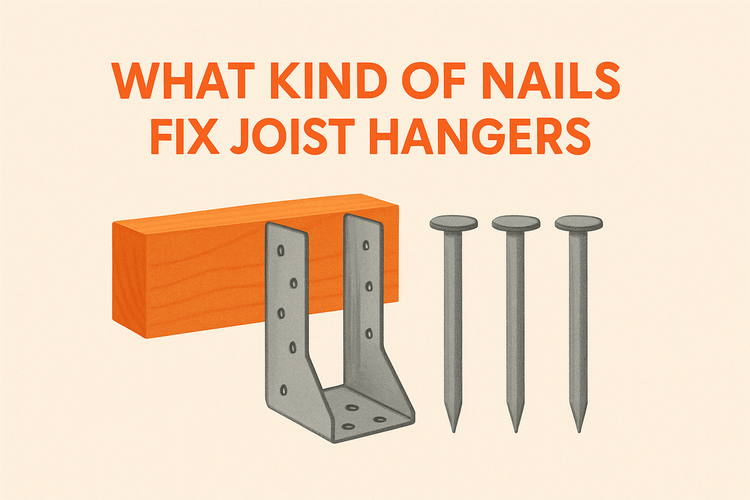What Kind Of Nails Fix Joist Hangers

Choosing the Right Nails for Joist Hangers
When securing joist hangers, the type of nail you use is crucial for structural integrity. Not all nails are designed to handle the load and shear forces associated with joist support.
Joist hangers require nails that are strong, durable, and ideally designed for metal fastening. Typically, 10d to 16d common nails are the preferred size, and the material should be galvanized to resist corrosion. Using nails that are too short or not rated for structural applications can compromise the entire framework. Therefore, understanding the right nail specifications before installation saves time and ensures code compliance.
Common Types of Nails Used for Joist Hangers
There are several types of nails available, but only a few are suitable for joist hangers. Galvanized nails, for example, are a popular choice thanks to their rust-resistant coating. These are especially important for outdoor or moist environments.
In addition to galvanized nails, stainless steel options are sometimes used in coastal areas or highly corrosive environments. For standard applications, 10d common nails (3 inches long) are often used for face nailing, while 1.5-inch long joist hanger nails are used for the angled nailing through the joist hanger flanges. Using the correct type ensures the joist hanger maintains its load-bearing capacity over time.
Joist hanger nails differ from ordinary nails mainly in their tensile strength and head design. Construction-specific nails like these are designed to deal with the push-and-pull forces exerted on the metal brackets. For a wide variety of reliable options, explore products in the Joist Hangers category.
Nail Sizes and Lengths: What You Need to Know
The size and length of the nail can greatly affect the performance of a joist hanger. Using nails that are too short may result in inadequate penetration into the supporting beam, while excessively long nails may split the wood.
Most joist hangers are designed for 10d or 16d nails. The recommended 16d nail is typically used when nailing into headers or beams due to its length and holding strength. On the other hand, manufacturers often suggest using shorter nails in the angled holes to avoid over-penetration or splitting, especially when installing across the grain of joists.
Some manufacturers provide specific nail charts or guides that correlate with the joist hanger models. Always refer to manufacturer instructions to avoid mismatching nail sizes. Compliance with these guidelines ensures that the fasteners meet local code requirements and load specifications.
Galvanization and Corrosion Resistance
Joist hangers are often used in environments where moisture is present, making corrosion resistance critical. Galvanized nails are coated with zinc, providing a barrier against rust and extending the life of the fastener.
In environments with high humidity or exposure to seawater, even hot-dipped galvanized nails might not be sufficient. Instead, stainless steel nails or specially coated alternatives are recommended. These options prevent structural weakening over time due to rust or corrosion.
The reaction between certain wood treatments and untreated nails can accelerate corrosion. It’s important to use nails that are chemical resistant, especially when working with pressure-treated lumber. Pairing corrosion-resistant nails with appropriate hangers found in the Joist Hangers collection ensures long-term durability.
Installation Techniques and Safety Tips
Proper technique in nailing joist hangers is just as important as the type of nail used. Always drive nails in straight to prevent the joist hanger from shifting or losing strength due to incorrect angles.
Pre-drilling is not usually required for hanger-specific nails unless working with particularly dense hardwood where splitting may occur. In multi-level or complex framing applications, using a nail gun with the appropriate power level can ensure consistency and efficiency. Be cautious with pneumatic nailers—overdriving can damage the hanger or wood structure.
Wear safety goggles and gloves during installation. Small metal fragments or sparks can pose a danger when using pneumatic tools. Proper planning and accurate measurement also minimize the risk of needing to remove and relocate hangers, preserving the integrity of both the wood and metal materials.
For better structural reinforcement, consider using complementary hardware such as Post Base connectors to tie vertical posts with your horizontal joist system. These components work together to deliver optimal load-bearing performance.
